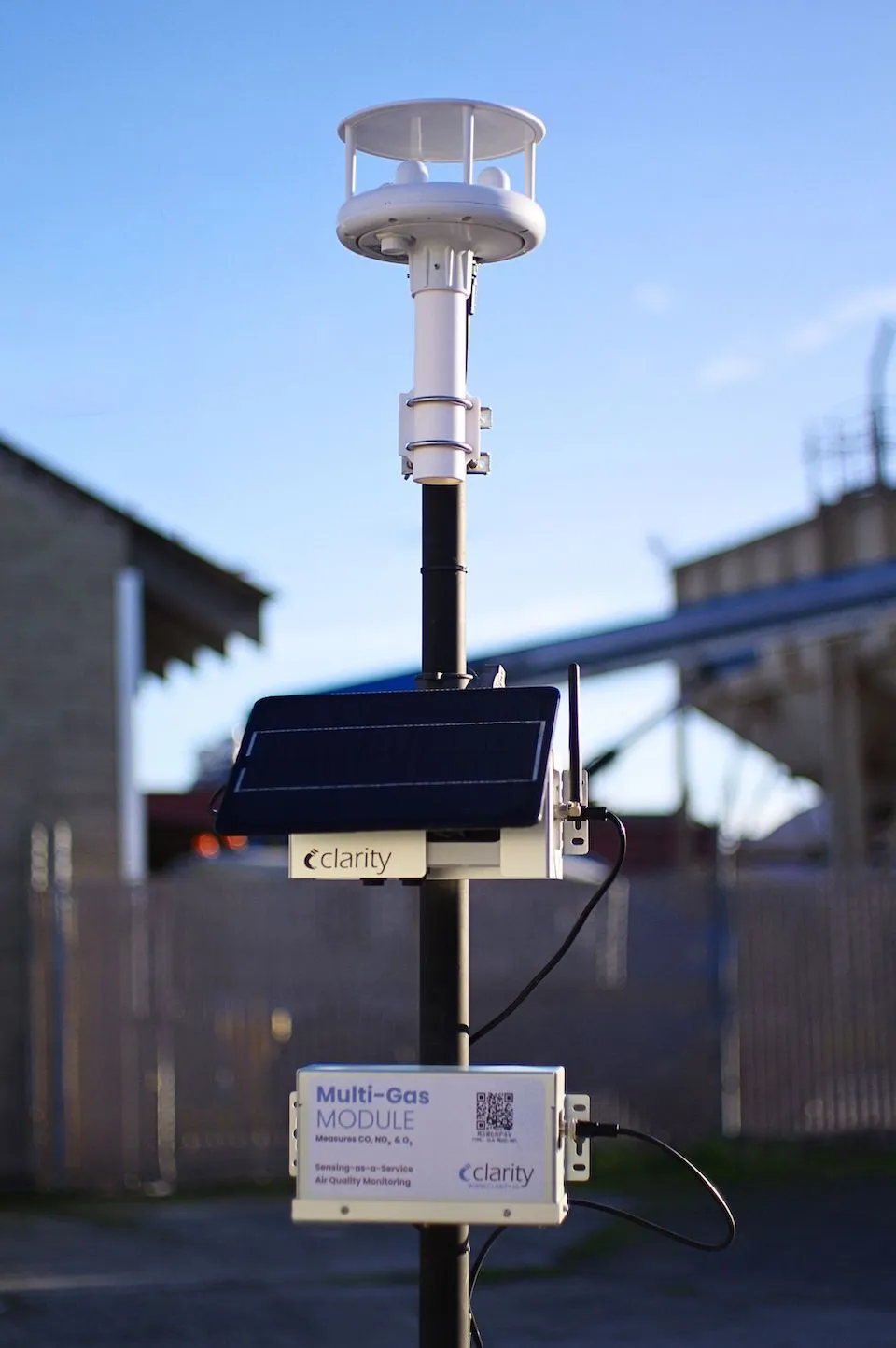Image provided by Jim Strasma via Unsplash.
TL;DR: The Fourth of July is a popular American holiday, but it brings a rise in air pollution. Fireworks release harmful pollutants and can trigger wildfires, while barbecues and increased travel add to the problem. Cleaner celebration options, such as drone shows, eco-friendly fireworks, community displays, and sustainable grilling, can help reduce the impact. Checking local air quality with tools like Clarity’s OpenMap is a good first step toward a safer, healthier holiday.
The Fourth of July is an exciting summer holiday where people lounge by swimming pools, get together with loved ones, and witness glowing night displays. However, amid all the fun, there is a downside: the Fourth of July often comes with increased air pollution. Understanding and mitigating this air pollution allows us to keep this holiday safe and enjoyable for everyone.
How fireworks affect air quality
Fireworks are one of the major sources of air pollution every Fourth of July. Each year, Americans set off almost 300 million pounds of fireworks. This adds up to nearly one pound per person living in the United States, with July 4th and the New Year both seeing the most fireworks celebrations.
Each firework carries a host of air pollutants, including carbon dioxide, nitrogen, nitric oxide, carbon monoxide, sulphur dioxide, and particulate matter. These pollutants can impact visibility and negatively affect public health. The South Coast Air Quality Management District warns against the potential cardiovascular and respiratory health effects of fireworks, such as asthma aggravation, decreased lung function, coughing, and even difficulty breathing and heart attacks.

Just how much air pollution do these fireworks produce? Considering the large quantity of fireworks set off over the holiday, the pollution can be quite extensive. A 2022 study in downtown Minneapolis, Minnesota, found that between 10 pm and midnight on July 4th, particle concentrations increased by 180–600% relative to the previous night, while carbon monoxide concentrations similarly increased by 32%.
The video below, by the Coalition for Clean Air, clearly visualizes how air pollution levels changed dramatically across Los Angeles over the course of the 4th and 5th of July, 2024. The timelapse uses data from the network of 200+ Clarity Node-S devices deployed across the Los Angeles Unified School District’s Know Your Air Network.
Another study conducted at 315 US monitoring sites found that, on average, fine particulate matter (PM2.5) levels are elevated by 42% over the 24-hour Fourth of July period. Fine particulate matter can make its way into a person’s lungs and bloodstream, and it has been linked to increased mortality, respiratory disease, cardiovascular disease, and lung cancer. Fortunately, the elevated levels measured in the study on the Fourth of July largely dissipated by noon the next day. However, even short-term exposure to fine particulate matter can have harmful consequences, especially for children, the elderly, and those with preexisting conditions.

Fireworks and the environment
Not only do fireworks harm public health, but they also impact the environment. Nitric oxide and carbon monoxide both indirectly contribute to global warming, while carbon dioxide is a potent greenhouse gas. Fireworks can also leave behind microplastics and perchlorate (a propellant chemical) in waterways and ecosystems long after the celebrations have ended.
Notably, fireworks also have the potential to start wildfires. Between 1980 and 2016, a total of 11,294 wildfires were started by fireworks. Nearly two-thirds (62.6%) of these firework-induced fires occurred during the two-week period encompassing July Fourth. In 2021, Independence Day fireworks started a wildfire that forced almost 100 households to evacuate in Centerville, Utah.
In addition to contributing to global warming and destroying ecosystems and communities, wildfires also degrade air quality up to thousands of miles away from the fire itself.

Mitigating the impact of fireworks
The prospect of a dark and colorless July 4th night sky might seem jarring. Fortunately, there are ways to mitigate the harmful effects of fireworks and enjoyable alternatives to consider.
Some fireworks are more environmentally friendly, using a cleaner nitrogen-based fuel to create explosions that produce less smoke and require less metal content to create vibrant colors. A type of firework known as a green cracker can help reduce particulate matter emissions. You might also consider enjoying a community-based fireworks show, so that you can still enjoy the spectacle while limiting the use of personal fireworks.
There are some great alternatives to fireworks altogether. Certain communities have adopted drone and laser shows, preserving a glowing night sky while foregoing the harmful explosions. On a smaller scale, party poppers, confetti cannons, and bubble guns can make for great replacements.

Other fourth of July air pollutants
Unfortunately, fireworks are not the only things contributing to this holiday’s air pollution. July’s summer heat encourages the production of ozone, which can exacerbate asthma and harm lung capacity.
July Fourth is also the most popular holiday for grilling. The tradition of backyard barbecuing can also affect local air quality, emitting carbon monoxide, nitrogen oxides, particulate matter, and volatile organic compounds. Fortunately, there are some steps that you can take to reduce barbecuing emissions, including choosing a more sustainable grill, picking higher quality charcoal, avoiding lighter fluid (consider using a charcoal chimney instead), and avoiding chemical cleaners.
Travel emissions
Another source of air pollution over the holiday is travel. The Transportation Security Administration (TSA) expects that over 18.5 million people will fly over the upcoming holiday. The American Automobile Association estimates that over 72 million Americans will travel domestically over the same period.

When it comes to air travel, you can reduce your carbon footprint by booking non-stop flights, flying economy, and packing light. Regarding car travel, you can reduce harmful emissions by carpooling, driving efficiently, using fuel-efficient or electric vehicles, and keeping your car well-maintained with regular tune-ups. Consider alternatives to driving when possible.
Looking Forward
However you choose to enjoy the holidays, the first step in reducing air pollution risk is knowing the air quality in your area. Check out Clarity’s OpenMap here, and explore ways to find a solution with us.

